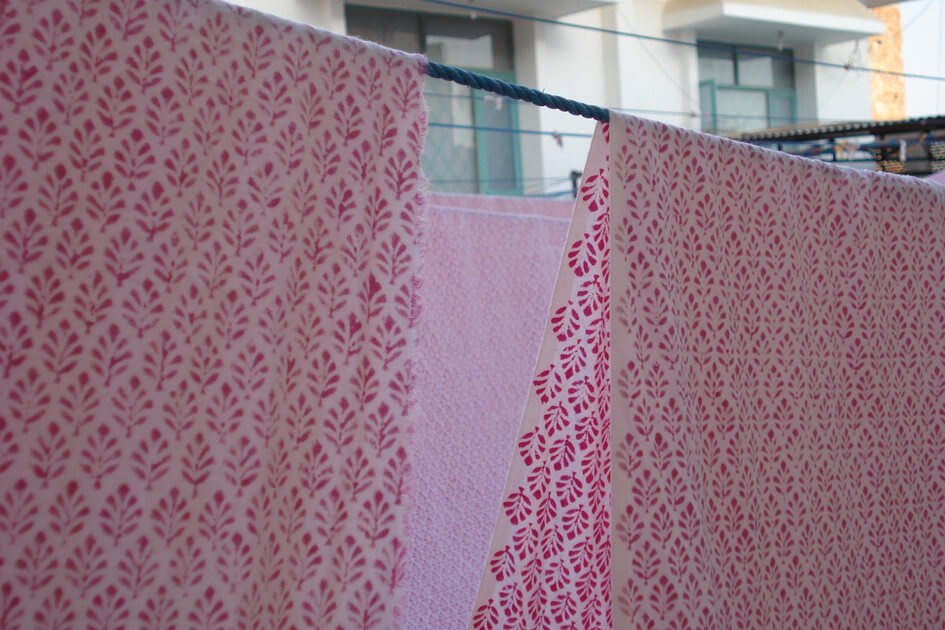
De binnenplaats
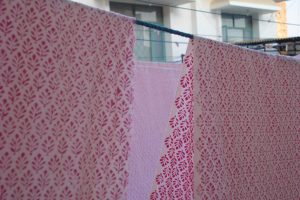 Luchtig wapperend katoen aan de waslijn op een Indiase binnenplaats. Dit klinkt als een heel gewoon dagelijks huishoudelijk tafereel.
Luchtig wapperend katoen aan de waslijn op een Indiase binnenplaats. Dit klinkt als een heel gewoon dagelijks huishoudelijk tafereel.
Voor mij was het een beeld om nooit meer te vergeten. Het was mijn eerste kennismaking met het mooie proces van blokdrukken.
Op de binnenplaats van de blokdrukfamilie hingen meterslange lappen, bedrukt met rozerode bloemetjes, te drogen. In de vertrekken eromheen klonk het geluid van ratelende naaimachines, vogelgezang, spelende kinderen en in de verte toeterende auto’s.
We lopen de vertrekken in waar blokdrukkers aan lange tafels staan te werken. In de ruimte heerst een serene rust. De houten blokken worden in de verf gedoopt en nauwkeurig op het doek geplaatst. Vervolgens geeft de drukker met zijn andere hand een klap op het blok om de verf goed over te brengen op de stof. Dit proces straalt rust, aandacht en vakmanschap uit. Naar de bewegingen en het ontstaan van prachtige stoffen met verfijnde patronen kan ik uren kijken.
Van alle handwerktechnieken in India wordt dit een van mijn favorieten. Ik vind de uitstraling van verfijnd en tegelijkertijd zichtbaar met de hand gemaakt textiel heel mooie.
Ik ben een liefhebber van allerlei verschillende stijlen in de textiel, van Staphorster stipwerk tot de Japanse ikattechniek en van Afrikaanse indigo en batik tot en met Indiaas chikan-borduurwerk.
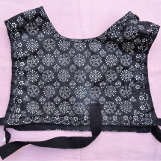
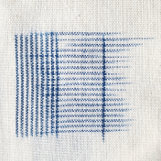
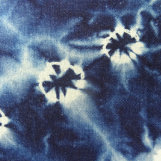
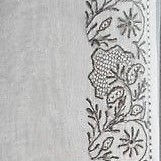
Toen ik besloot mijn eigen bedrijf op te zetten koos ik voor deze, mij na aan het hart liggende techniek, het blokdrukken.
Blokdrukken begint met het tekenen van een patroon en het bepalen hoeveel kleuren er in het patroon moeten komen. Vervolgens begint de houtsnijder met het gutsen van het patroon in een houten blok. Als het patroon vier kleuren bevat, snijdt hij vier blokken. Ieder blok laat slechts een deel van het patroon zien, het deel waar een van de vier kleuren de stof gaat raken.
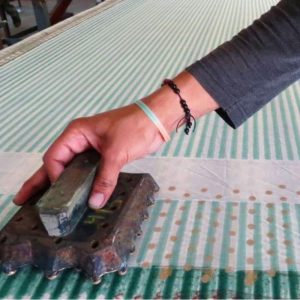 Er zijn veel verschillende stijlen van patronen te vinden, van romantische bloemen en Indiase paisley’s tot gestileerde of grafische patronen.
Er zijn veel verschillende stijlen van patronen te vinden, van romantische bloemen en Indiase paisley’s tot gestileerde of grafische patronen.
Ik wil graag een balans zoeken tussen de traditionele Indiase blokdrukstijl en de hedendaagse Europese smaak en van deze combinatie mijn eigen, herkenbare stijl maken.
De sfeer van die binnenplaats is mijn inspiratie, met de kleurige en prachtig bewerkte stoffen die daar hingen en de geluiden en geuren van India op de achtergrond.
Anne Ritsema van Eck
